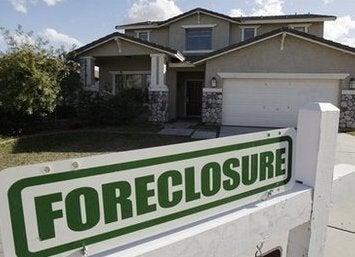
The plan announced last week by President Obama to encourage lending to
small businesses, in its recognition of the severity of the problem, is a noble
first step. However, if we are truly committed to the salvation and revival of
America’s small and mid-sized businesses and to saving and creating jobs, a
more comprehensive plan is required. The Obama plan, while well intentioned,
places the onus, in its entirety, on community banks to restart lending. In theory and political pacification,
this might make sense, but in practice, it will never work. And we are out of
time. The plan we place forth now must offer an immediate and effective
solution or permanent unemployment will plague us for decades.
Community banks have not been able to ride the full force and effect of
TARP and other government programs. They struggle under the weight of large
non-performing home loan mortgage and commercial real estate portfolios, with
the rates of defaults showing no sign of deceleration. Most community banks fight for their
own survival, and regardless of incentives, are in no position to provide
resources or inure the detriment of risks inherent to lending to small
businesses, many in liquidity crises. Moreover, many community banks will be
wary to accept the reporting requirements and conditions attached to TARP
funds. The Independent Community Bankers of America, its primary trade
association, immediately expressed concerns following Obama’s
announcement. “It’s uncertain how
many community banks will use the program given the current examination
environment and the conditions Congress has imposed on TARP funds,” Cam Fine,
president and CEO of the ICBA said in the release.
We need a plan that is designed to ensure funds will reach small and
mid-sized enterprises (SMEs) directly and with requisite sense of urgency. More
than 70% of America’s work force is housed in SMEs and the liquidation of these
businesses continue daily because they have no access to the basic working
capital loans needed to operate their businesses. SMEs are the backbone of our
economy, and they are in desperate need of support. Permanent unemployment will
reach epidemic levels if finding a solution to continued job loss is not our
nation’s priority. The SME Rescue Loan Program (RLP), my proposal to address
this crisis, provides a qualitative and tactical plan founded in a patented
quantitative solution that protects taxpayer dollars. For more information, see
www.smerescueloans.com.
Earlier this summer, I proposed the RLP as a natural expansion to the
Public–Private Investment Partnership (PPIP) under TARP. The existing PPIP, announced
a year ago, was established by Treasury to purchase toxic assets from bank balance
sheets. With time, it has grown evident toxic assets are neither the major danger
to our economy or obstacle to new lending.
The RLP is designed to address the current threat to our economy within
the construct of Treasury’s original plan. The RLP is drafted to support
origination of new loans to those SMEs that cannot access traditional bank
lending. Because it is based on an
existing program, the RLP can be implemented with rapidity. And by reliance on private investment
managers, who demonstrate the risk profile for troubled credits, rather than
community banks, probability for success is exponentially enhanced.
A year
ago, the implosion of credit markets began as a Wall Street crisis but rapidly
spread to Main Street, paving a path of destruction. Credit markets seized and
the global economy appeared to stand on the precipice of collapse. Governments intervened with myriad
programs designed to slow the pace of damage. These programs succeeded, to varying degrees. Although grave
risk of impending financial collapse may be behind us, the economy remains
fragile. The fall-out from the crisis of last autumn has given way to new and
dangerous threats of extremely high unemployment and permanent job losses, a
prospect more frightening than others to Main Street Americans. Absent an immediate rescue,
unemployment could peak in excess of 12 percent with underemployment levels
approaching 20 percent, exacerbating demand destruction and further economic
deterioration.
With each passing day, the schism between Wall Street, Washington and
Main Street widens. The American people grow increasingly incredulous with the
complacency of Washington leadership.
Spreading optimism, in the face of Main Street hopelessness, is an
affront that will no longer be borne. Wall Street buoyancy adds insult to
injury, and Americans will not accept Wall Street bailouts founded upon
taxpayer dollars with no meaningful action to save American jobs. We have a
plan that initiates rescue financing and saves jobs in a manner that can be
immediately effective by means of a combined private and public sector
solution. The time to act is now.
